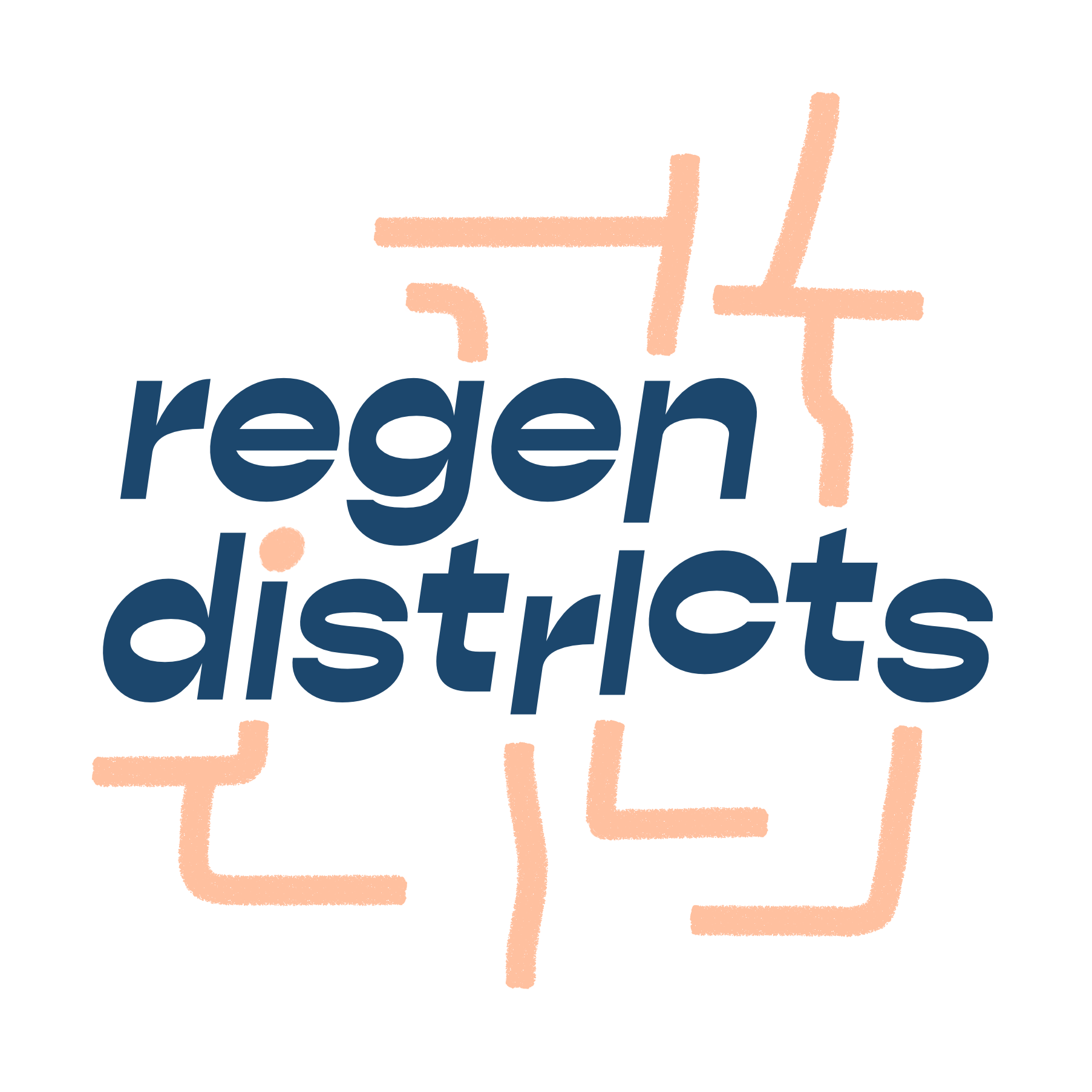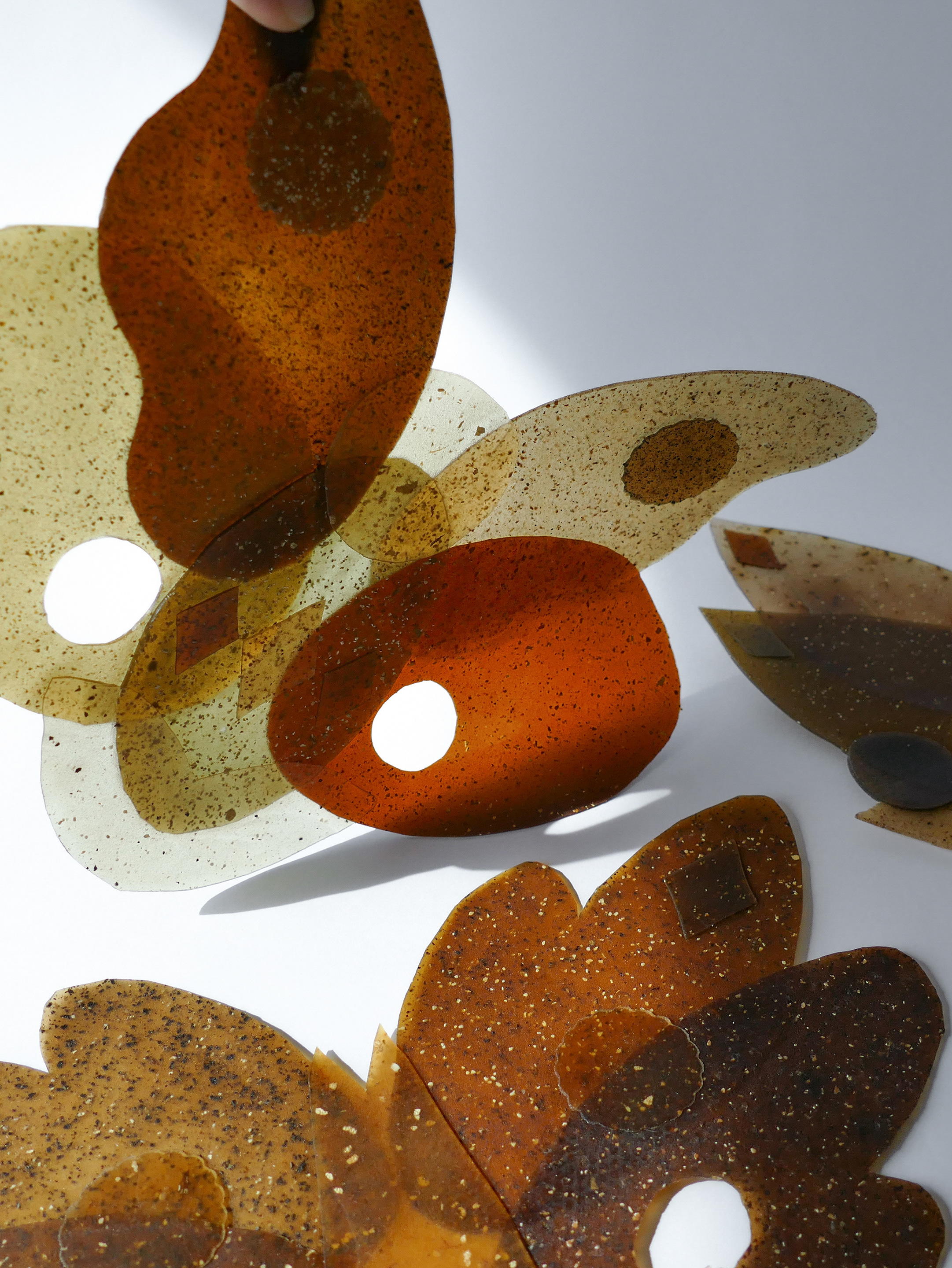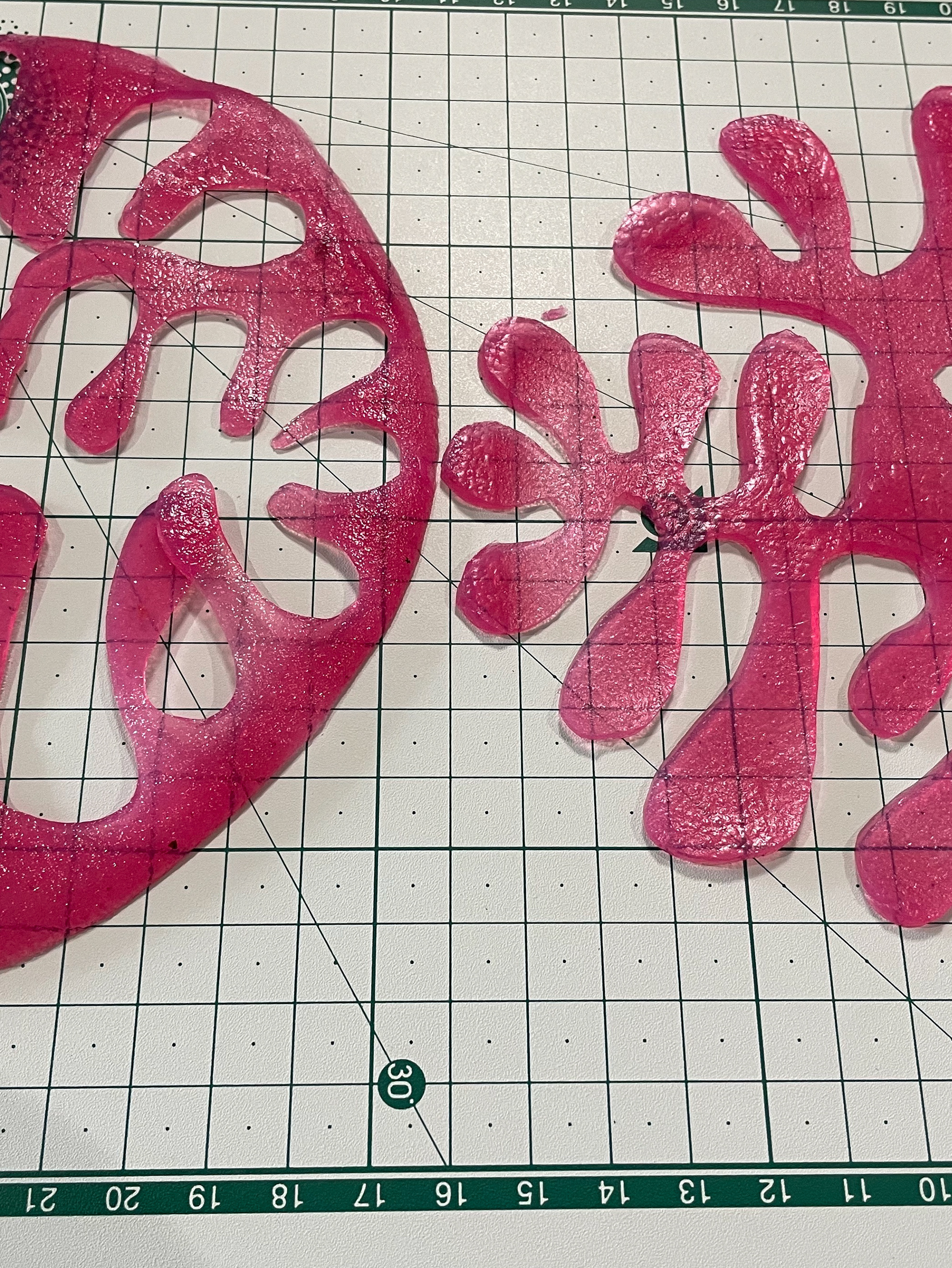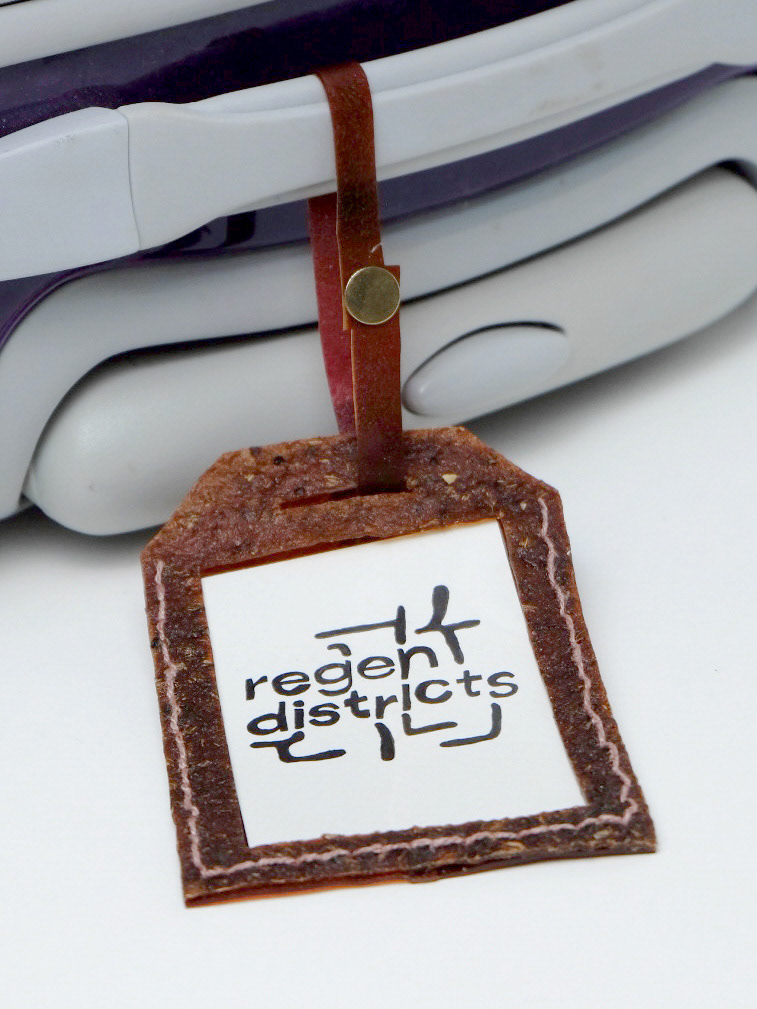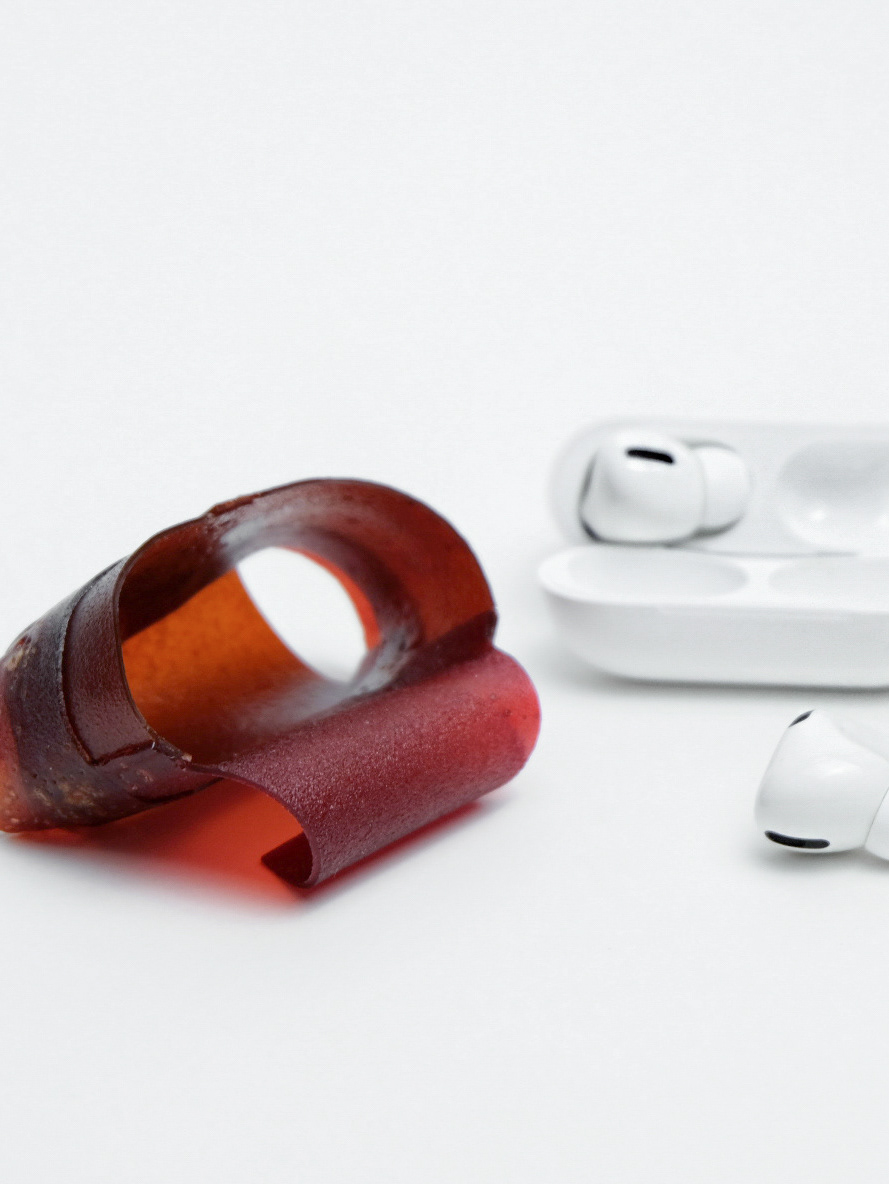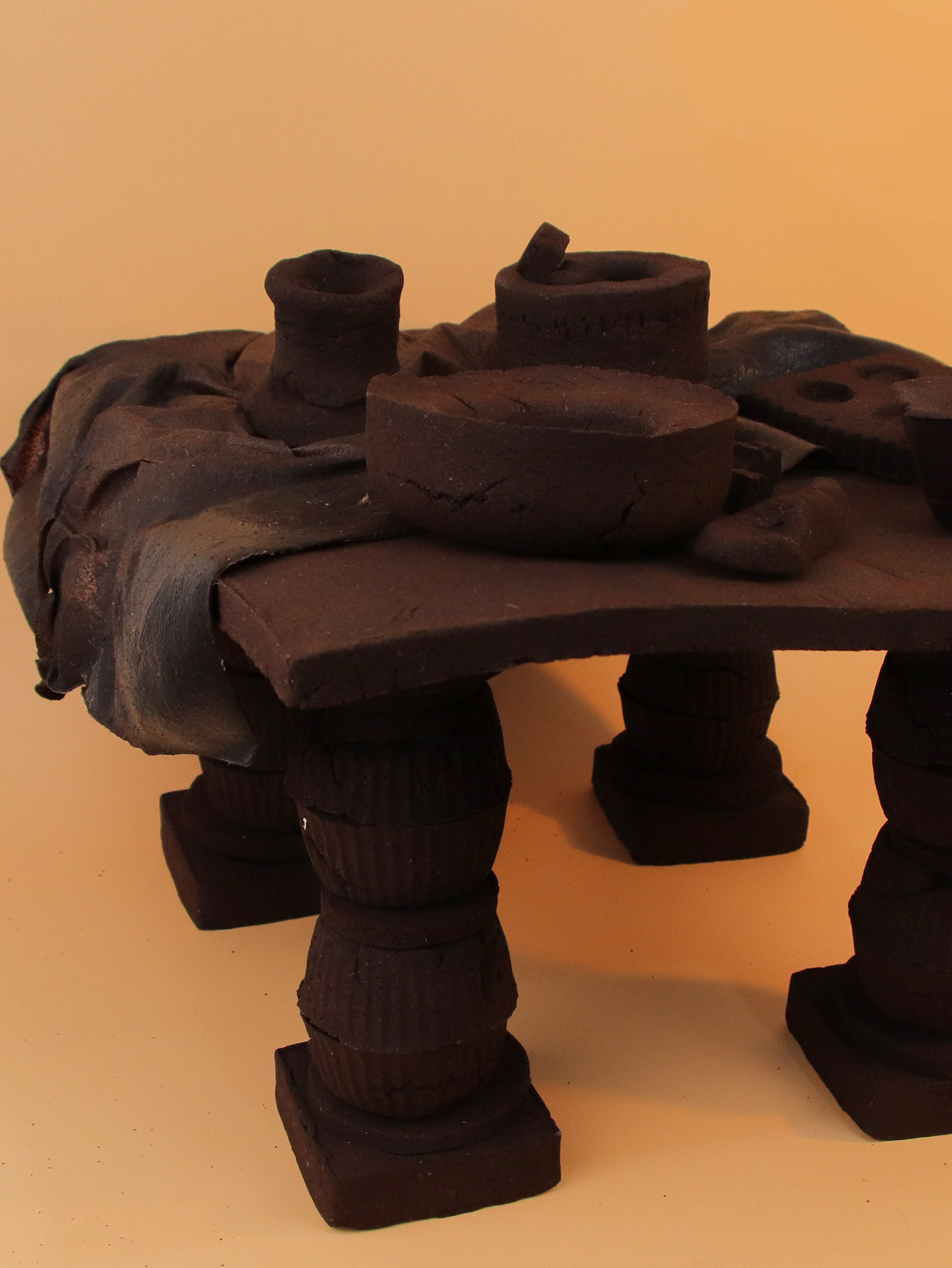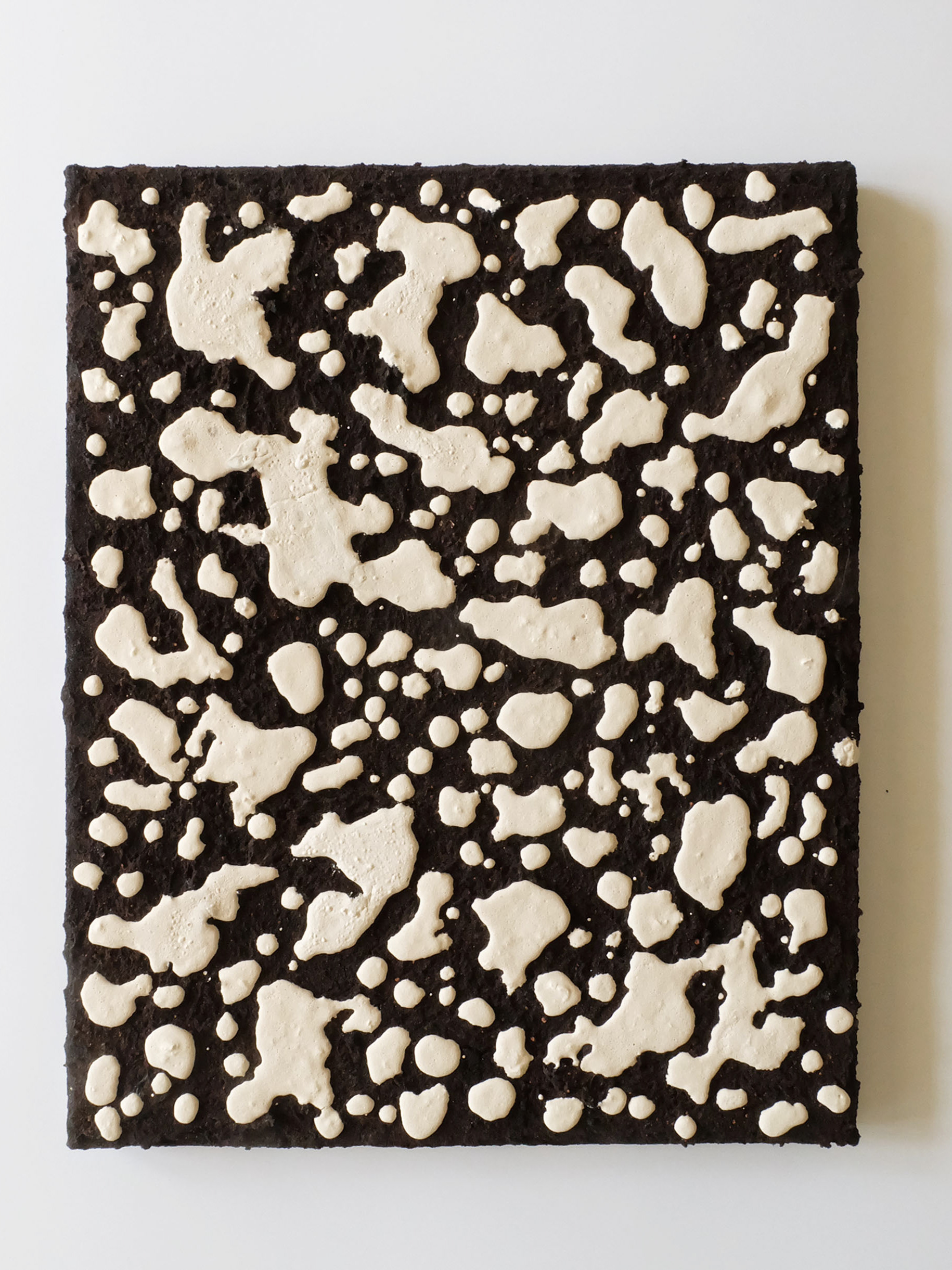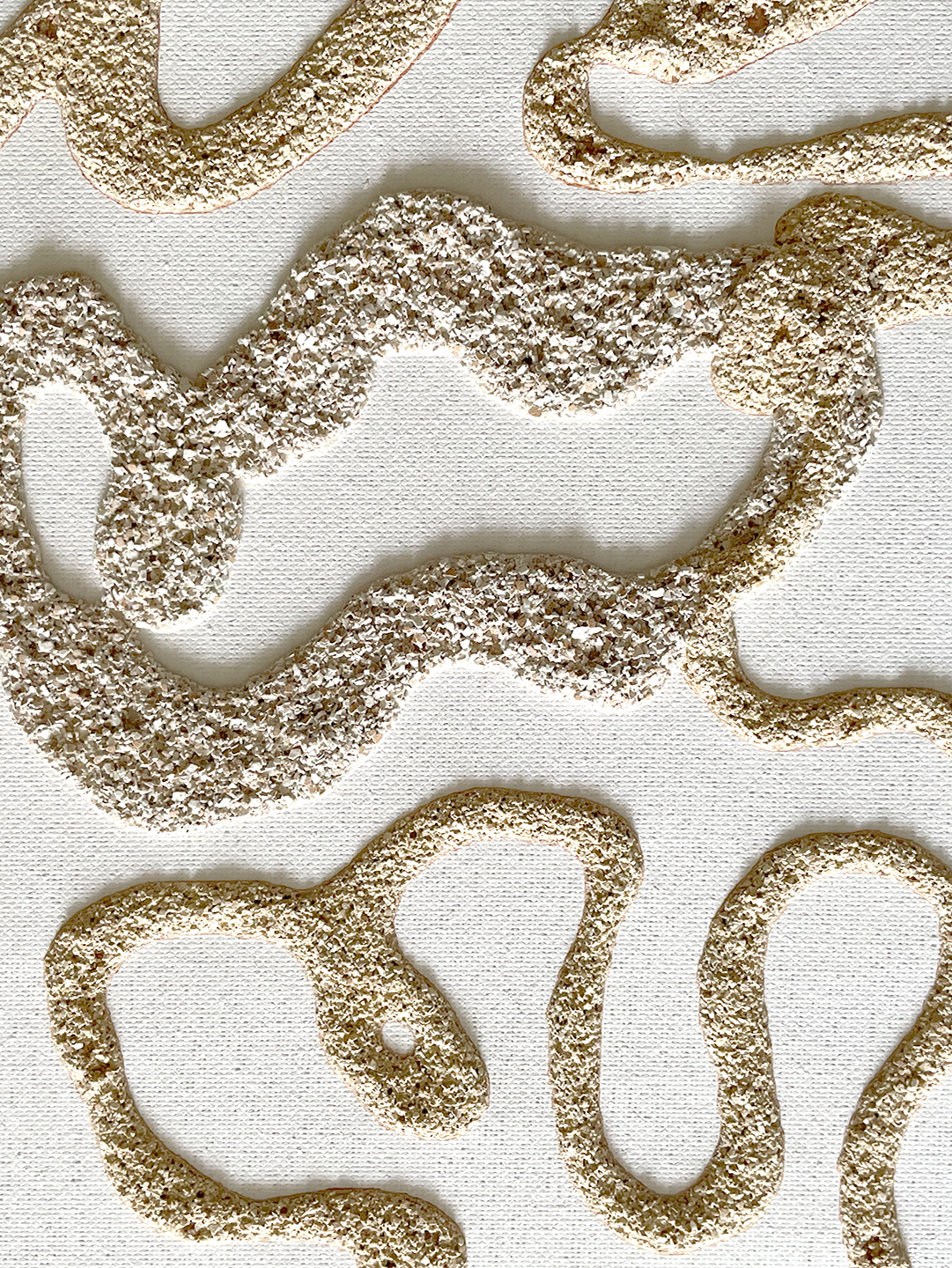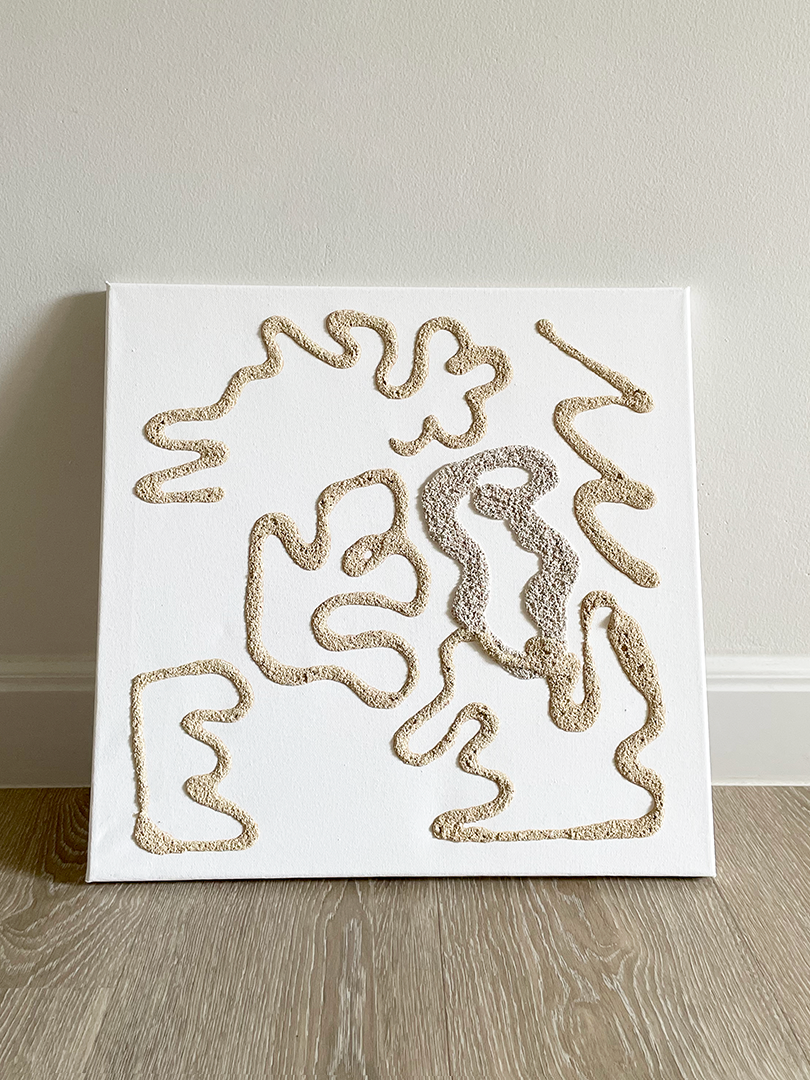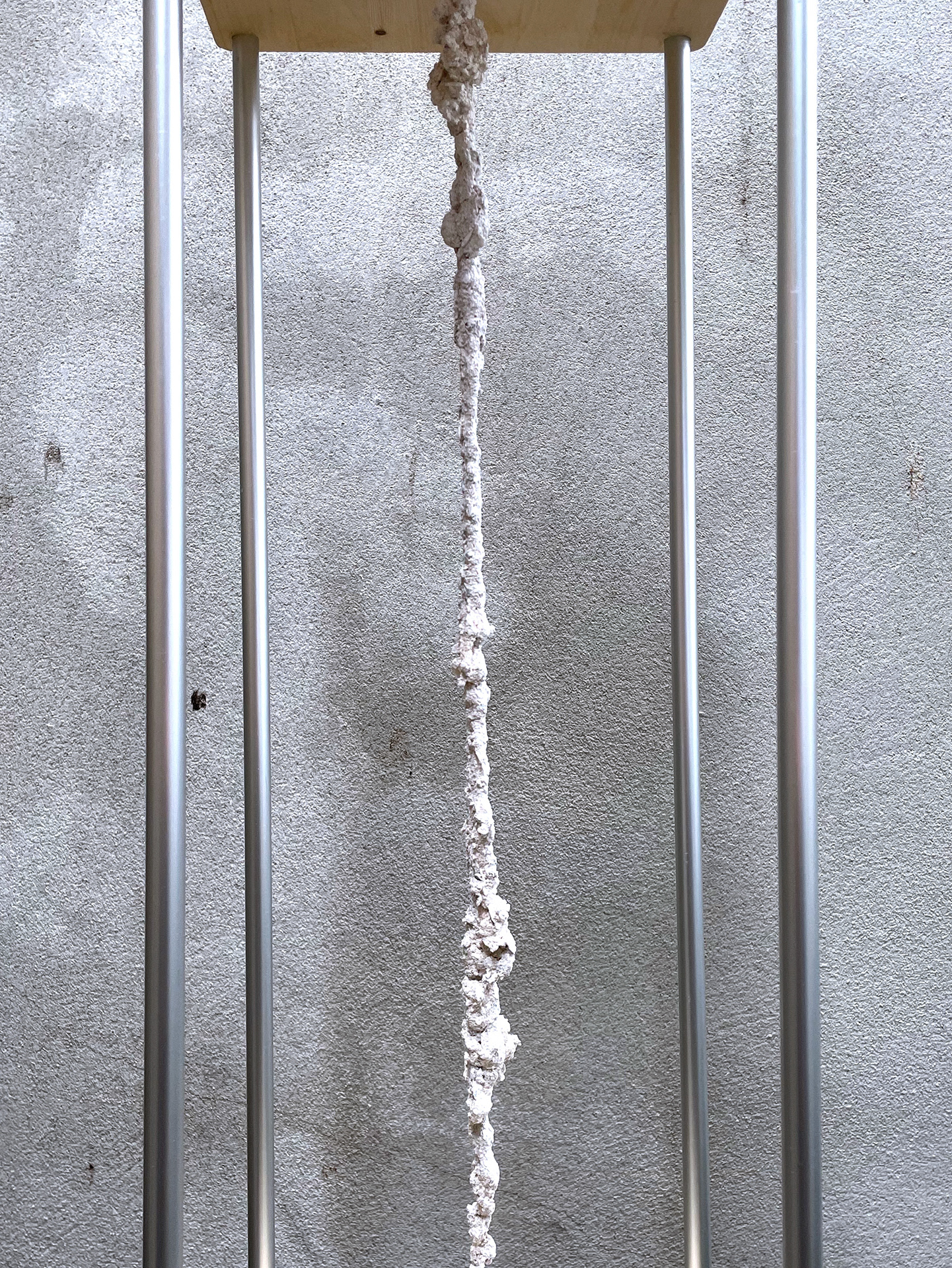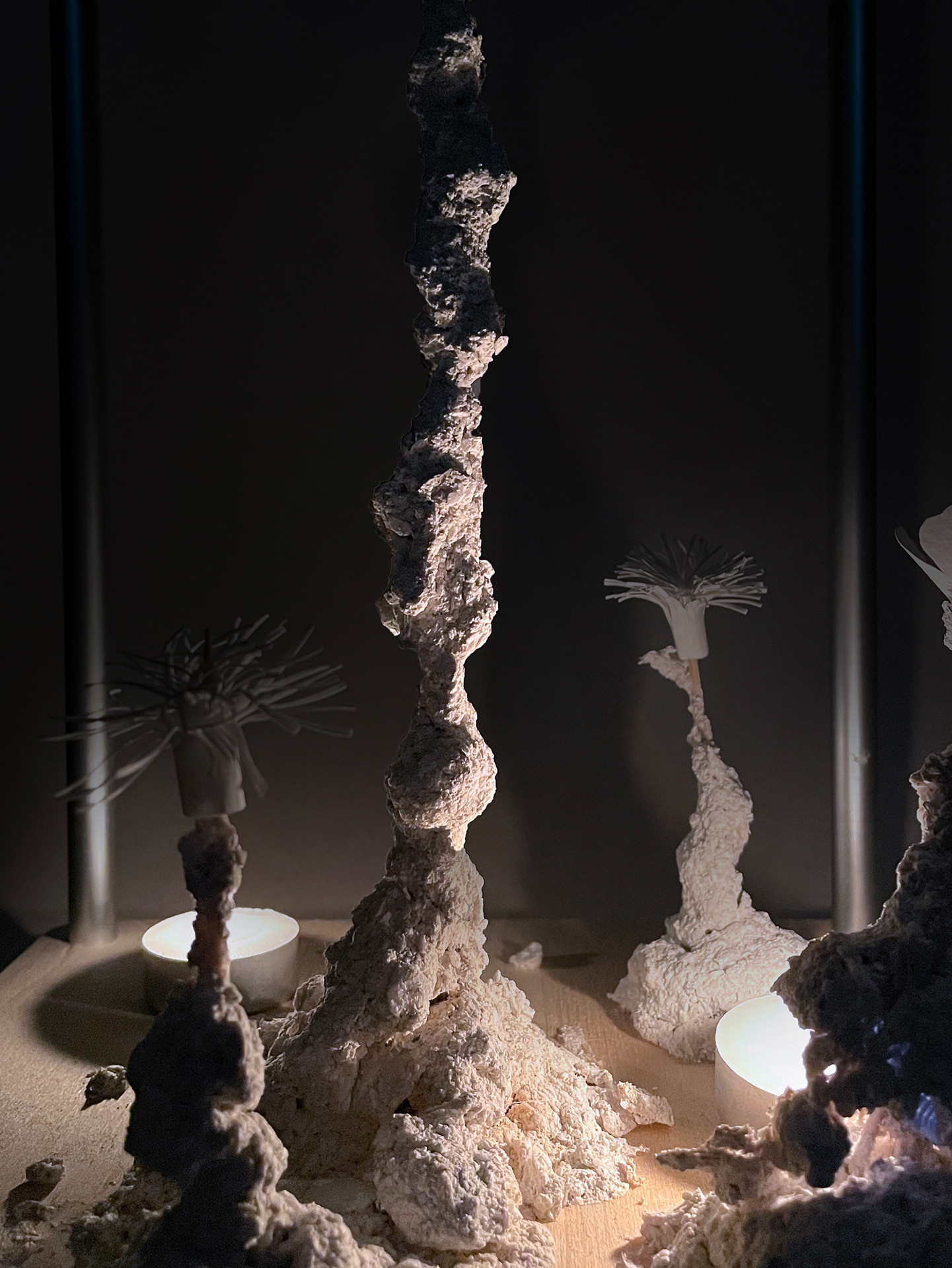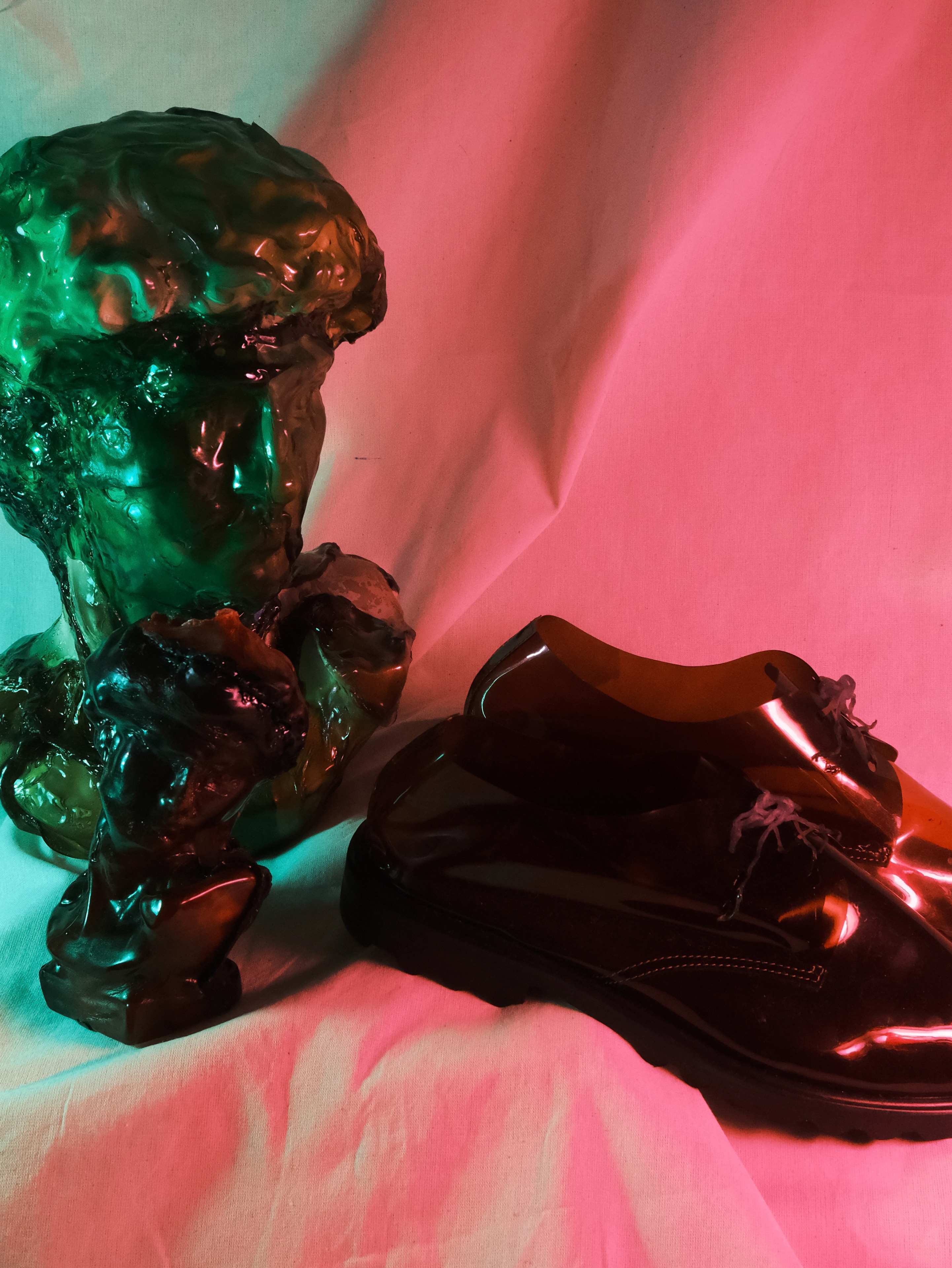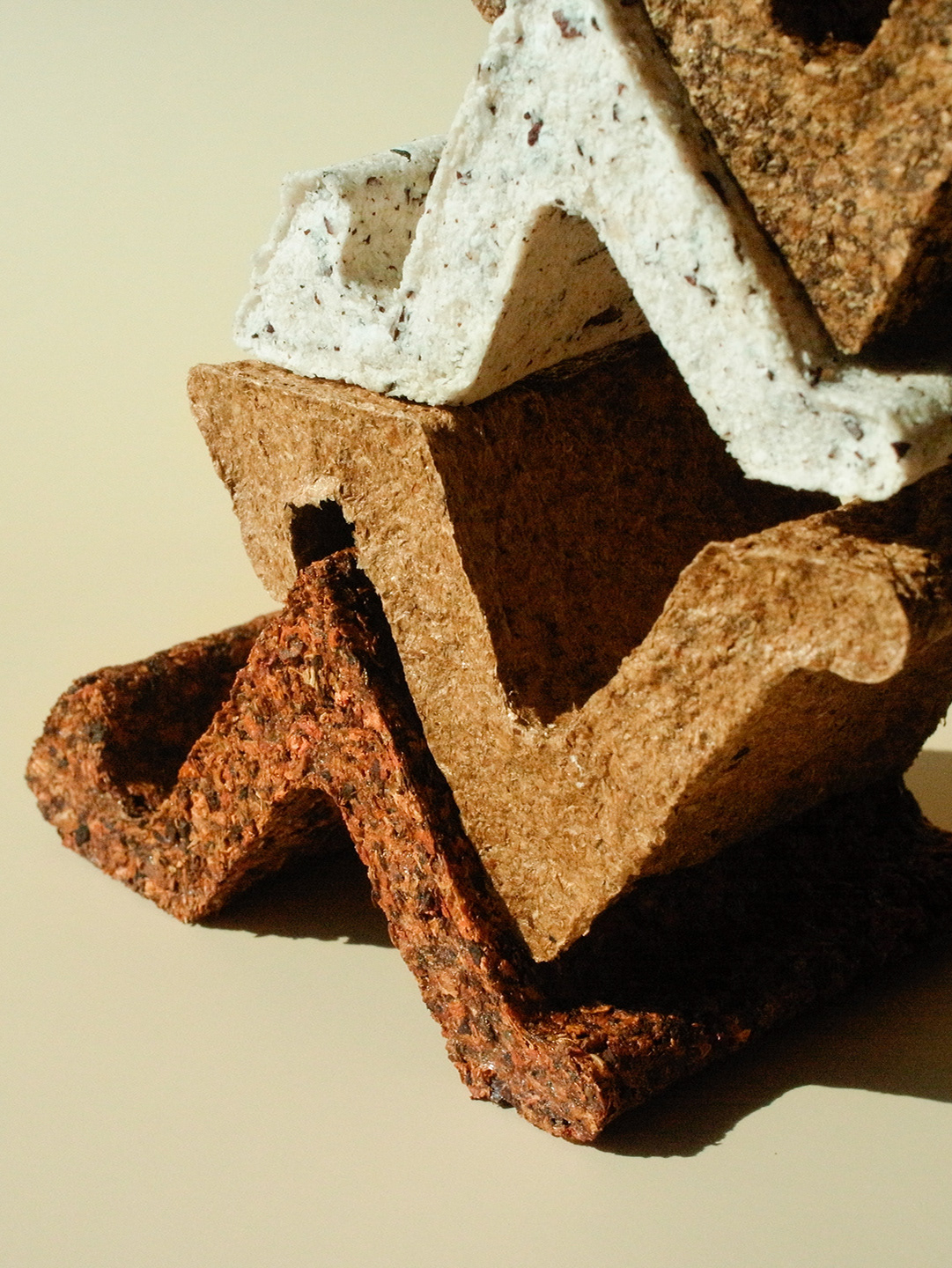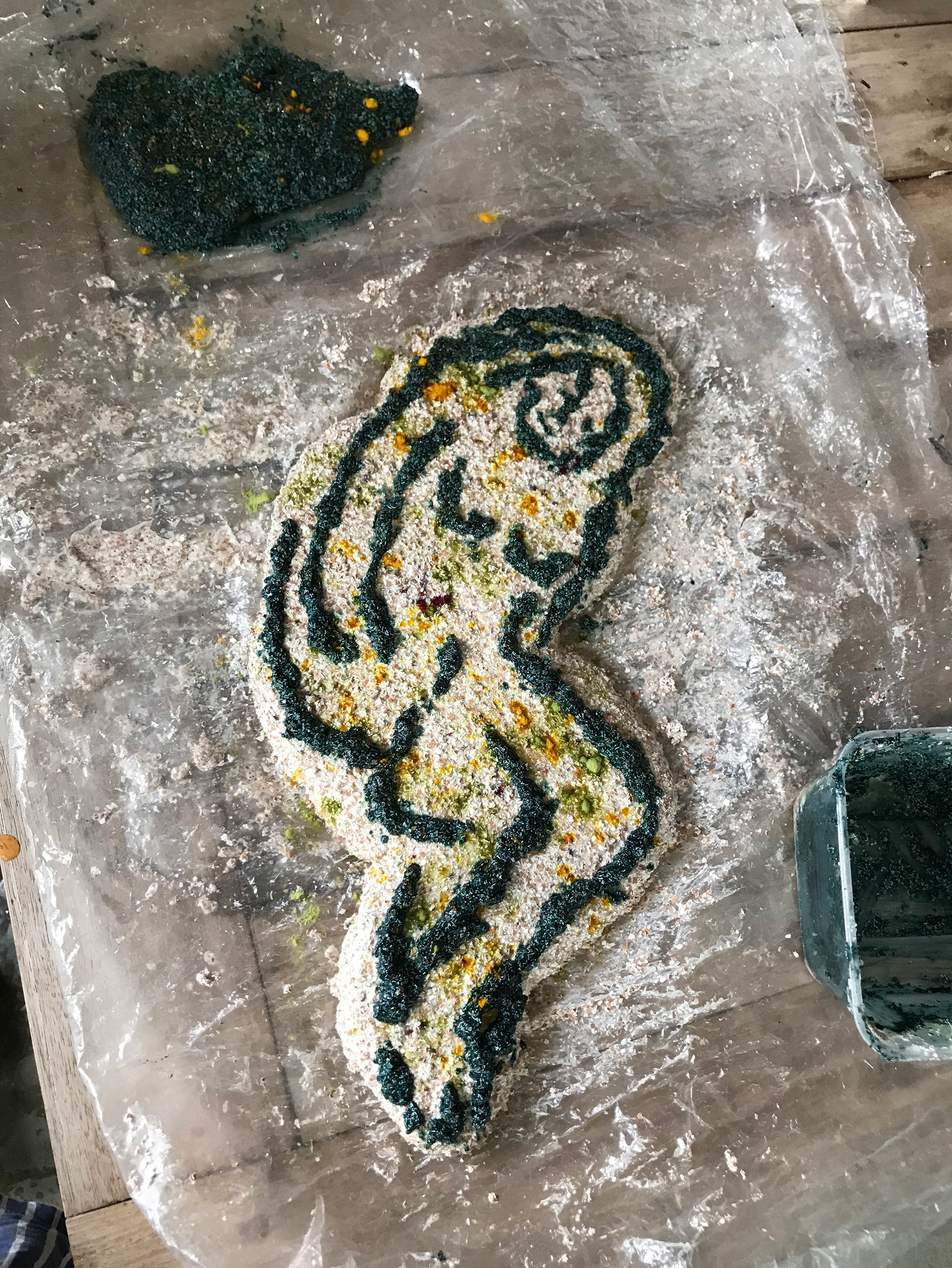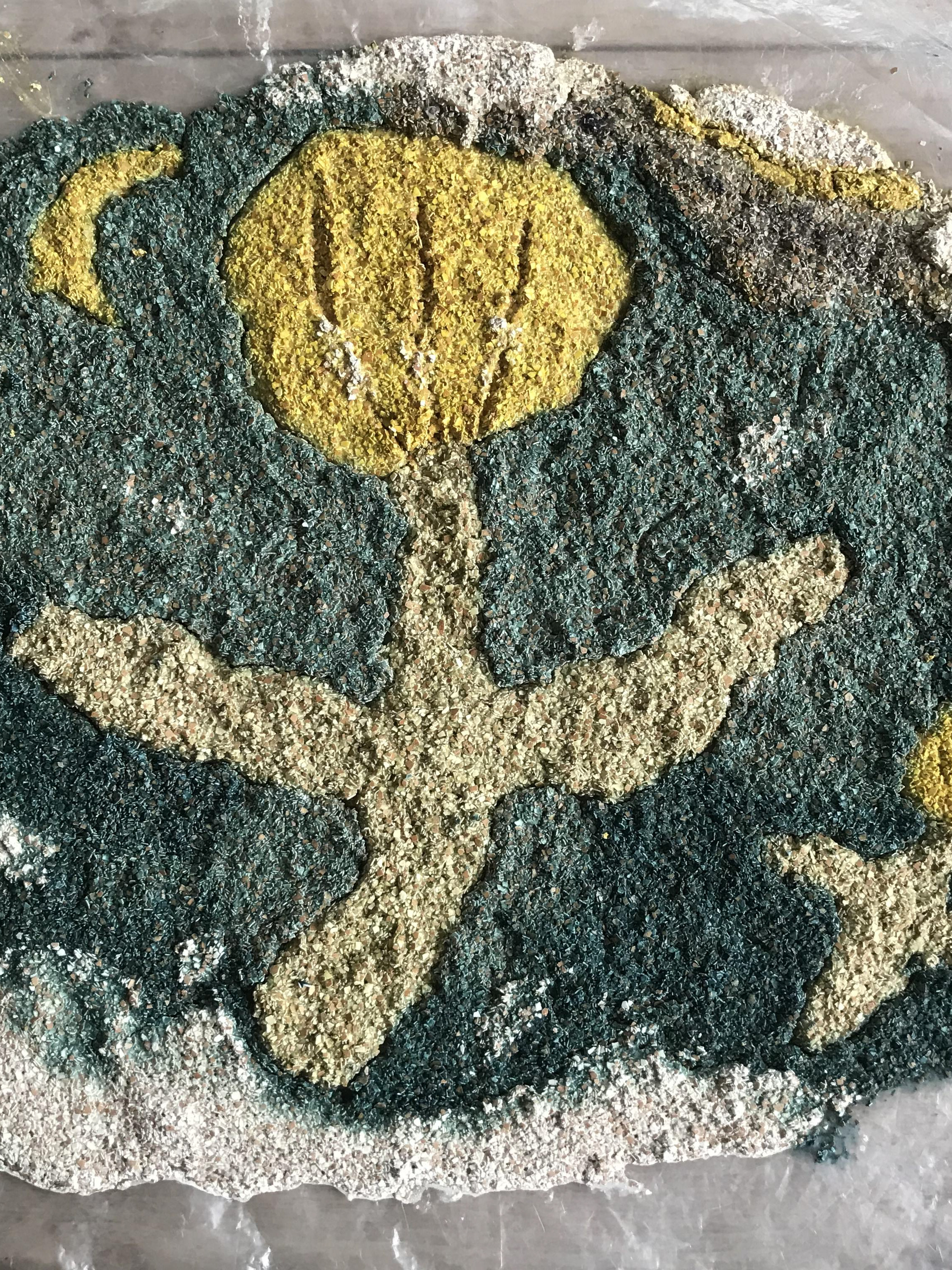As a workshop facilitator for Regen Districts, I made various samples by mixing food waste collected from partnered cafes/restaurants with 2 biodegradable binders: sodium alginate and xanthan gum — to learn about their properties, so that I can share insights and overview with the attendees.
The process involved different methods; sculpting, moulding, compressing, etc. I also adjusted the ratio of the binders along the way to find the appropriate viscosity, to make it easy to work with and less brittle, as well as to reduce cracks. However, this depends on the work you aim for. If you aspire to have unpredictable effects, you can intentionally create cracks and voids by adjusting the amount of the binders and ingredients. Another main observation is the shrinkage. I made a variety of rectangular samples by using the same mould, but with different ingredients, to spot the reduction in each sample’s mass.
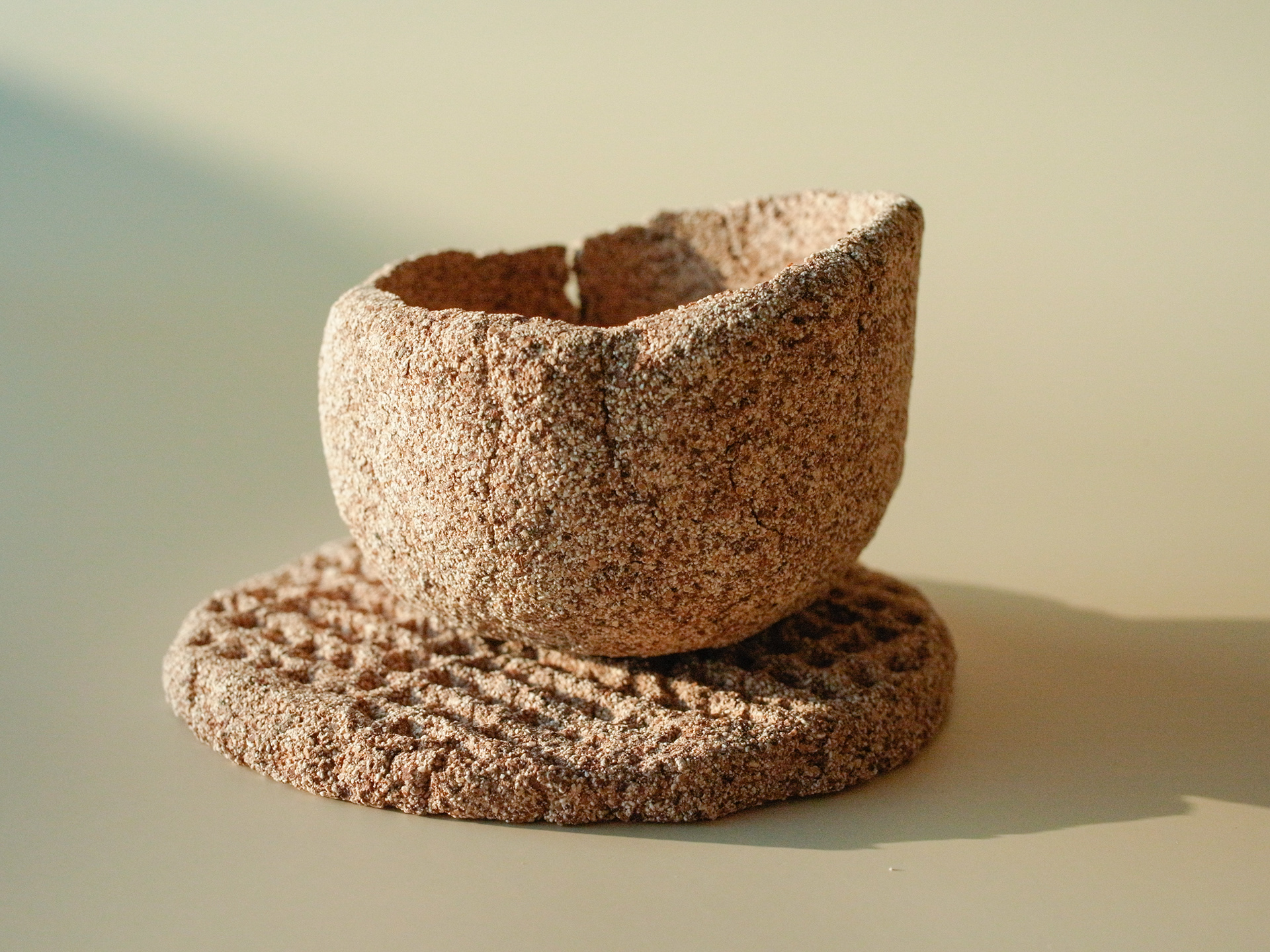

ในฐานะที่เป็นผู้จัดทำเวิร์กชอปของโปรเจคนี้ จะต้องมีการทดลองทำวัสดุตัวอย่างโดยการใช้วัสดุประสานที่สามารถย่อยสลายได้ตามธรรมชาติ (sodium alginate และ xanthan gum) บวกกับส่วนผสมต่างๆจากเศษอาหาร (ขยะอินทรีย์) ของร้านคาเฟ่และร้านอาหารที่ได้เข้าร่วมเป็นพาร์ทเนอร์กับเรา เพื่อเรียนรู้เกี่ยวกับคุณสมบัติของวัสดุและนำความรู้กับข้อสังเกตมาแชร์ให้กับผู้เข้าร่วมเวิร์กชอป (ศิลปิน และ นักออกแบบ)
โดยได้เริ่มศึกษาจากกระบวนการต่างๆเช่น การปั้น การขึ้นรูปแม่พิมพ์ การบดอัด ฯลฯ อีกทั้งได้ลองปรับอัตราส่วนของส่วนผสมไประหว่างทางเพื่อหาความข้นหนืดที่เหมาะสม เพื่อให้ง่ายต่อการขึ้นรูปและมีความเปราะน้อยลง รวมทั้งลดรอยแตก แต่ถ้าหากผู้ทำต้องการให้วัสดุออกมามีเอฟเฟกต์ที่คาดเดาไม่ได้ ก็สามารถจงใจทำให้เกิดรอยแตกโดยธรรมชาติได้โดยการปรับสูตรและสัดส่วนเช่นกัน อีกข้อสังเกตสำคัญที่ได้พบคือการหดตัวของวัสดุ พบว่าวัสดุจะมีการหดตัวแตกต่างกันไปขึ้นอยู่กับประเภทของส่วนผสมและอัตราส่วน ถึงแม้ว่าจะใช้แม่พิมพ์ขนาดเดียวกัน
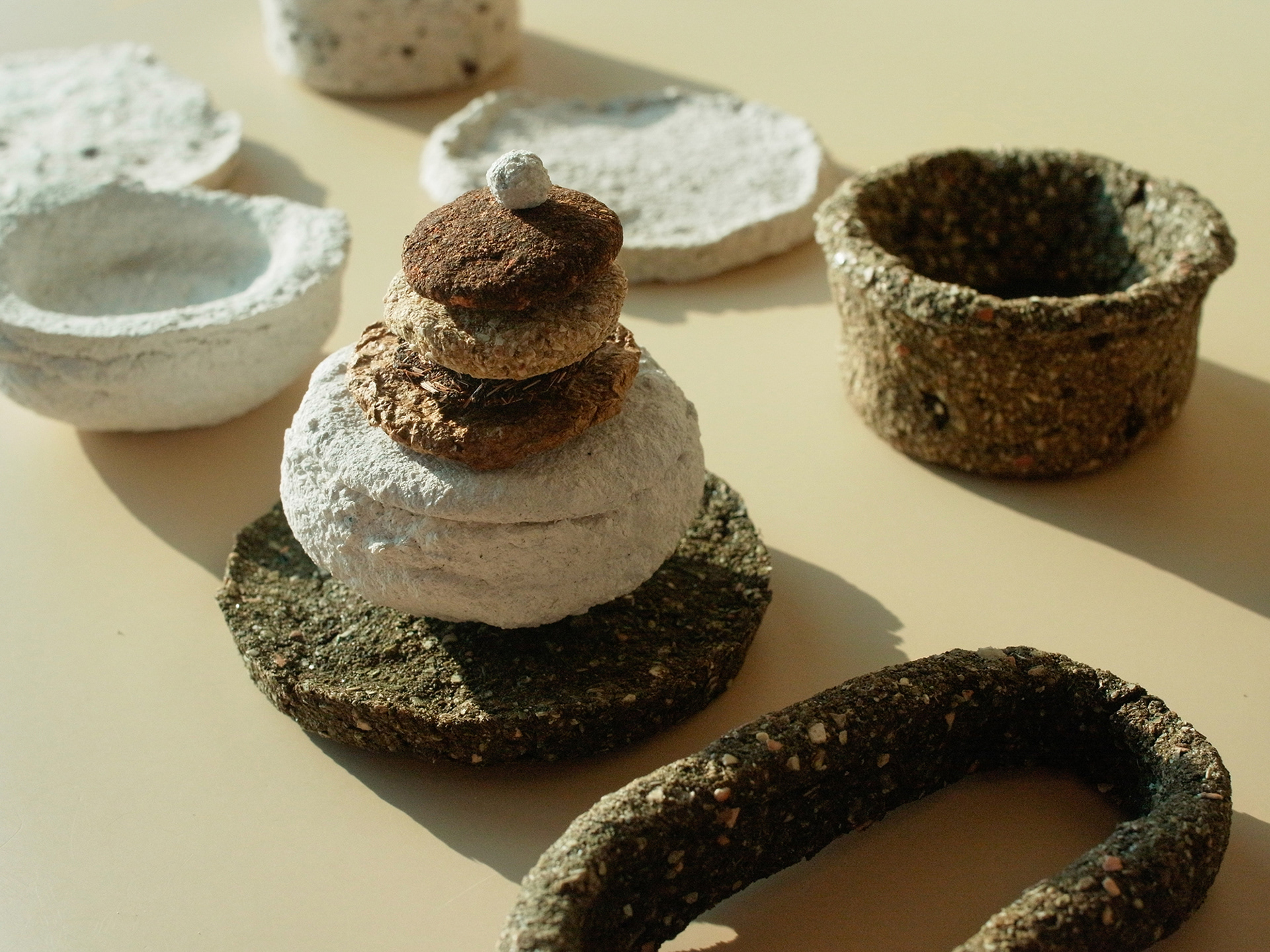
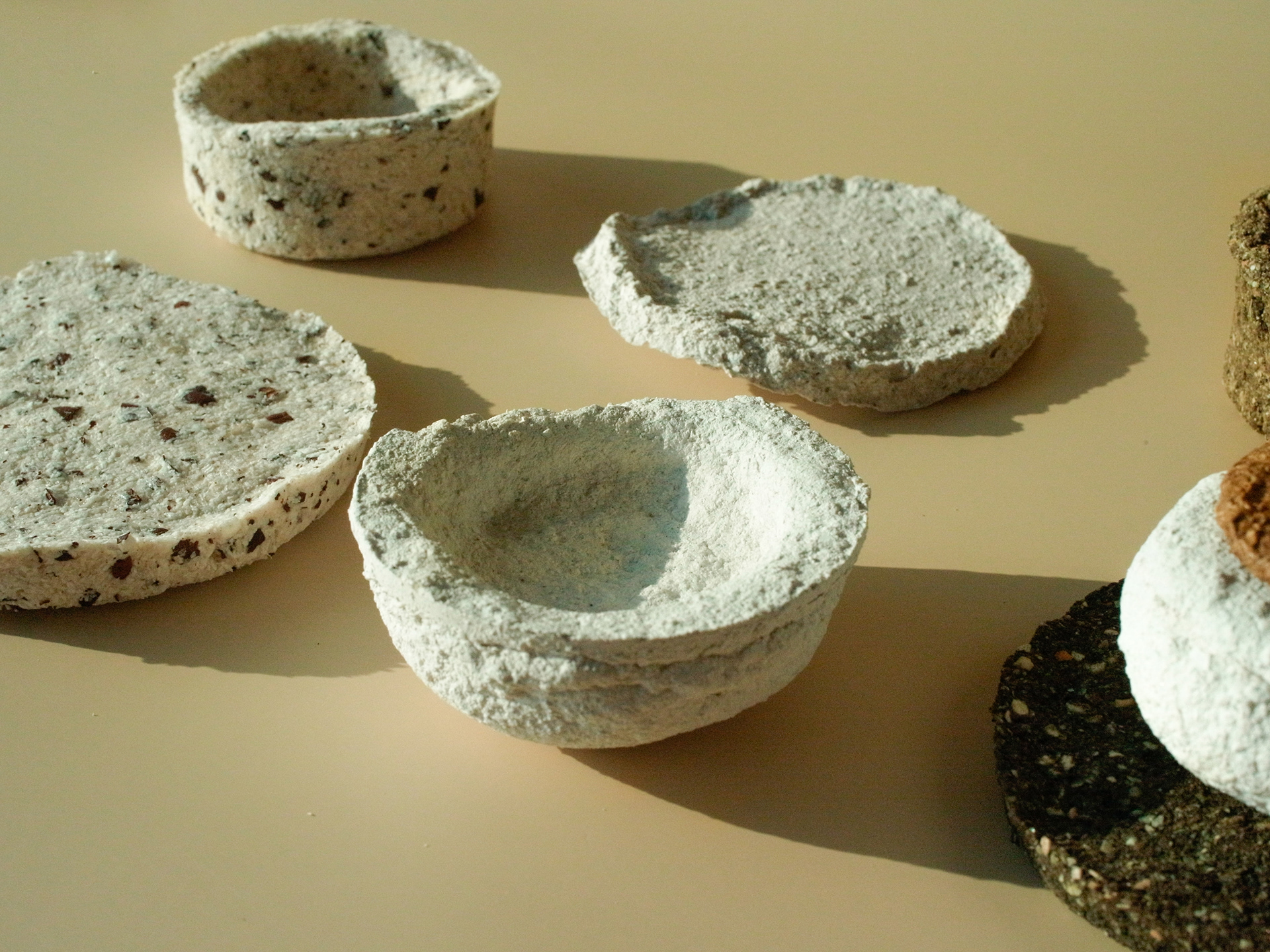
What are the challenges?
"Keeping fungus away from the samples has been my priority. When drying the biomaterials, I need to make sure that I place them in a well-ventilated area and observe them a few times a day. This normally takes several days (2-6 days) to be completely dried, so I need to plan the date of making with my schedule accordingly. For example, if I make a batch on Thursday or Friday, I can’t really be away on the weekend if it’s not dried. Hence, it’s almost a must for me to get making on Monday or Tuesday. Anyway, you can use an oven or a dehydrator to fasten the drying process to only a day; but I avoid this method if it’s not truly necessary."

Why do you find these ingredients/materials interesting?
"To be fair, I’m attracted to every material that doesn’t contain toxic chemicals, is renewable and is naturally biodegradable. You can compost it, you can leave it in your garden without causing harm, it might even fertilise your plants if your ingredients comprise nutritious waste like used coffee grounds — what’s not to love about that? I’m also keen on things I’ve never done before, so the idea of learning how to work with food waste has always been appealing to me. From waste to resource? I’m sold."
Do you feel content with the work?
"Yes. There were a lot of failed samples, but that’s how I’ve learned. Hence, the contentment in the knowledge gain in a short period of time. Also, the overall samples’ appearance reminds me of the Zen elements, which I find it very soothing, somehow."

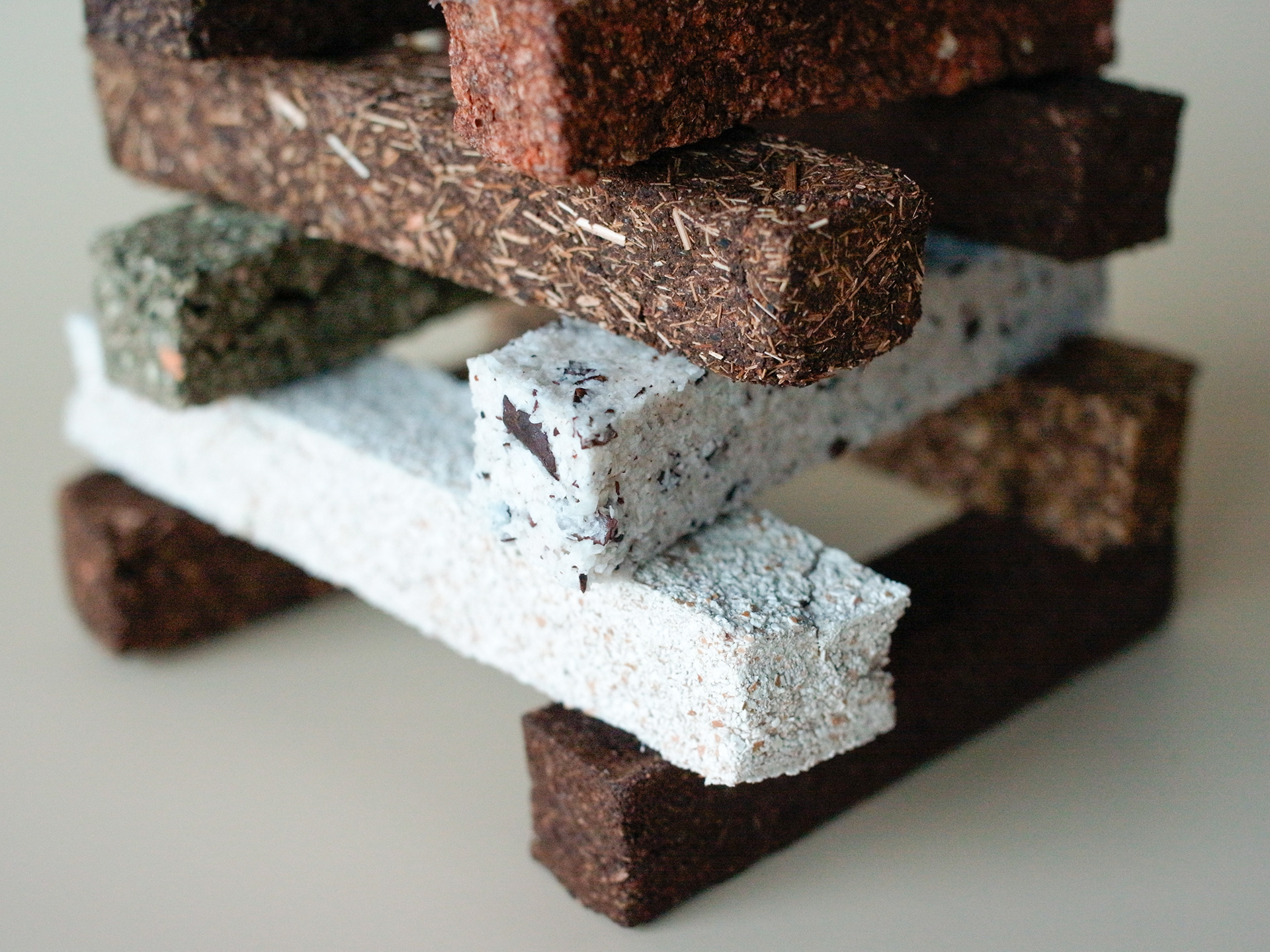

What do/don't you like about working with biomaterials?
"I like the fact that I can keep things away from landfills, even if it’s just a tiny amount, but if more and more people are working with biomaterials, then who knows?
Although, I can’t say that I enjoyed the part where I found out that some of my initial prototypes or samples fell apart when I touched them. This could put you off if you’re not into experimentation and reiteration (fortunately, I’m fine with that). Also, the moulds! I love microorganisms, don’t get me wrong, but sometimes it’s quite tiresome to start over again for the same thing that I’ve already made."

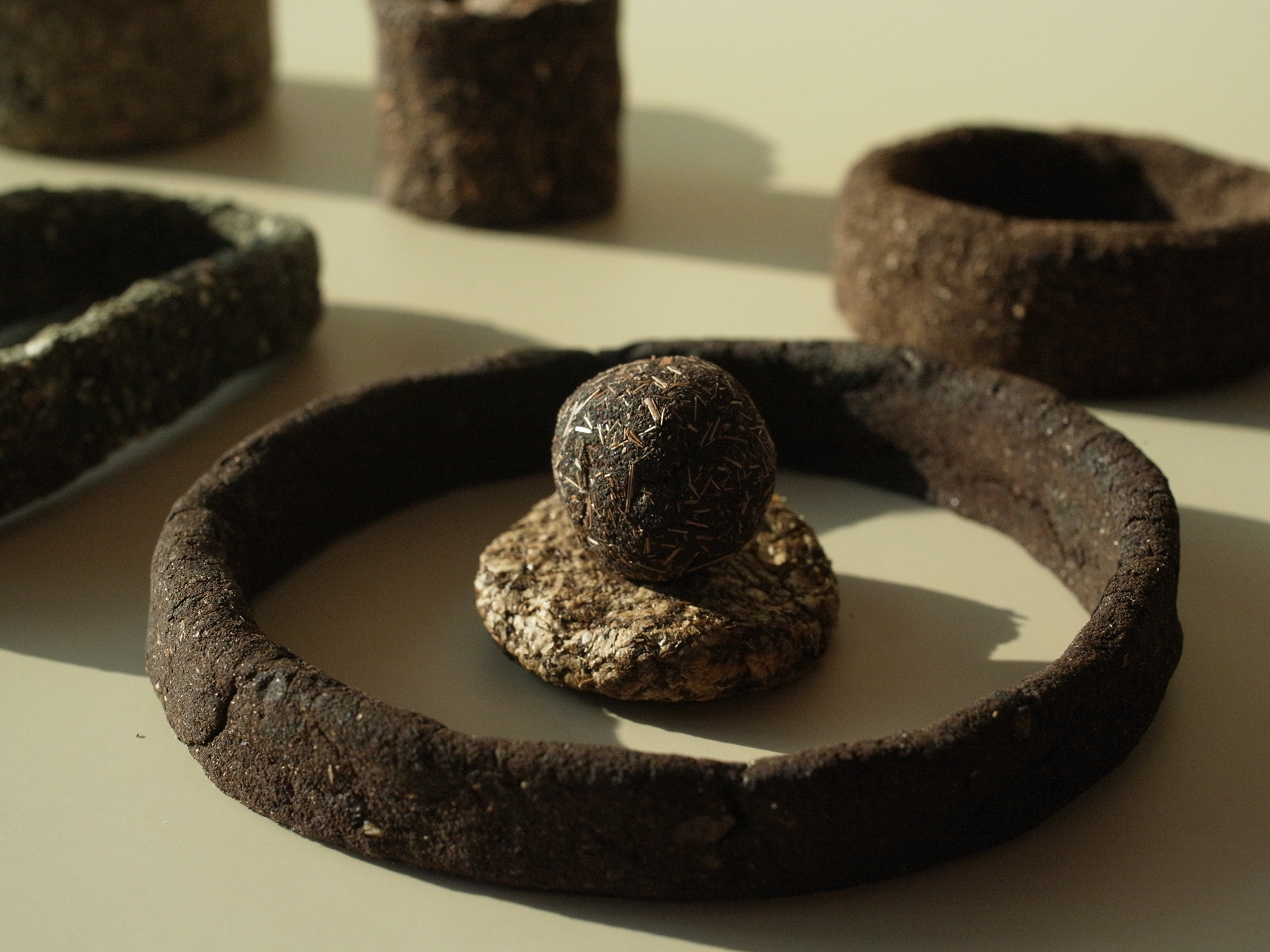
Do you want to explore more with biomaterials in the future?
"Since I’m a creator of Regen Districts, I guess I don’t have a choice, do I?… Well, on a serious note, not only do I want to continue exploring more for my personal projects, but also keep on facilitating people who want to get started or join in this exploration. I really hope I can stick with this."


Anya Muangkote - Designer
Anya has a multidisciplinary approach to design, uniting the fields of architecture, music, and product. For her, design is present in every creative practice, in different mediums and scales—from the spaces that we dwell in to the tactile entities that we utilise in a daily routine. Her project outcomes have included object, experimentation, system, design fiction, and tool.
Recently, she has been focusing on designing for circularity with the endeavour to make sustainability appealing. Her interests lie in the field of algaculture, future food, biomaterials, accessible design, distributed systems, public participation, and renewable energy.
Email: anyamuangkote@gmail.com
Website: anyamuangkote.info
Instagram: @anyamuangkote
Facebook: anyamuangkote.am
